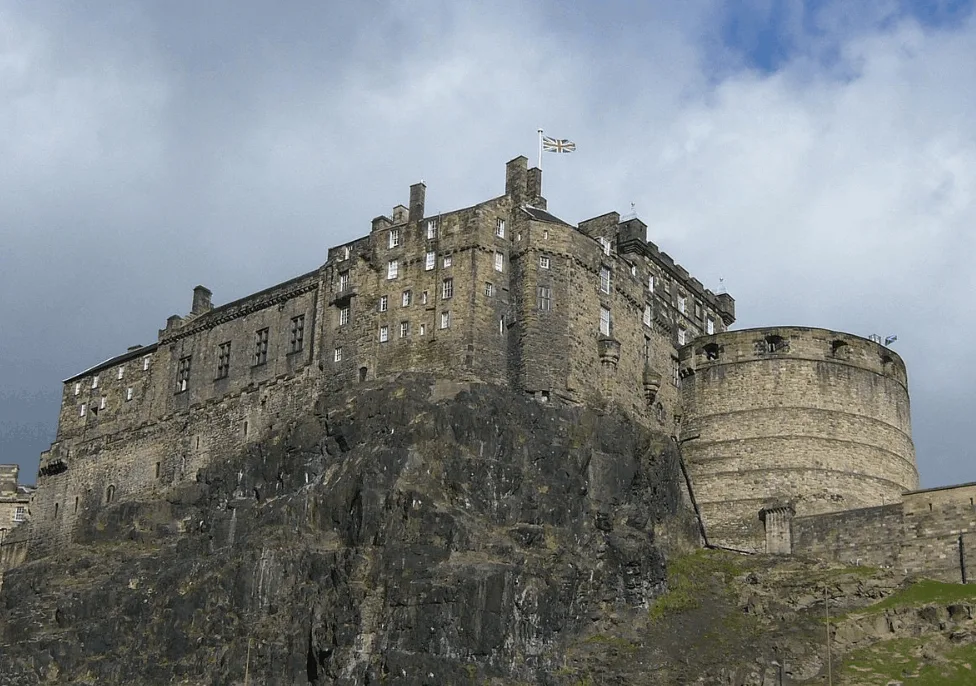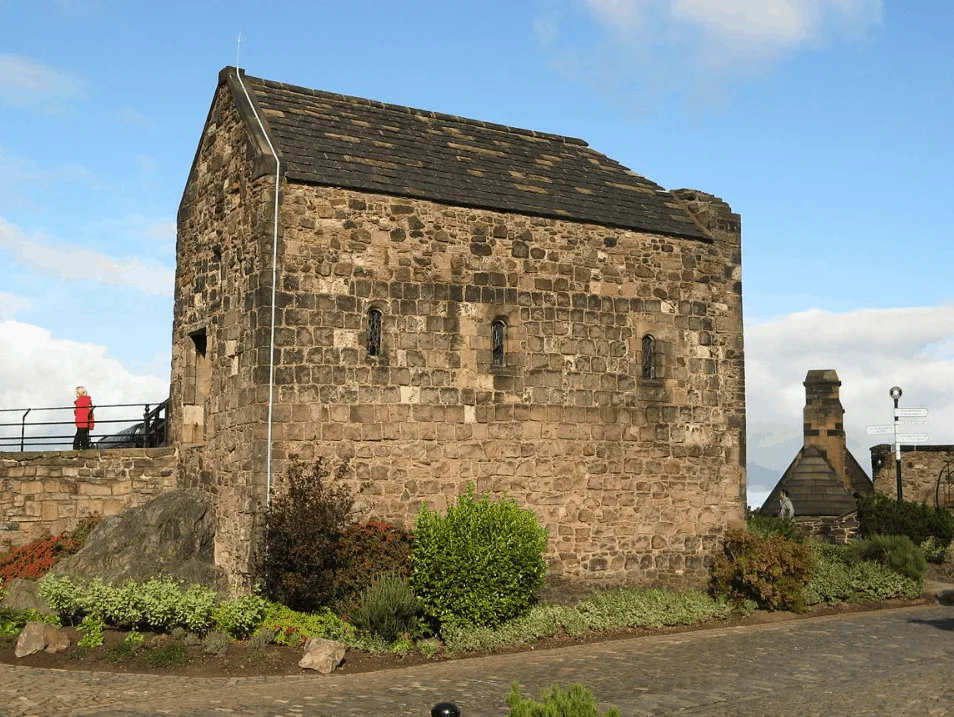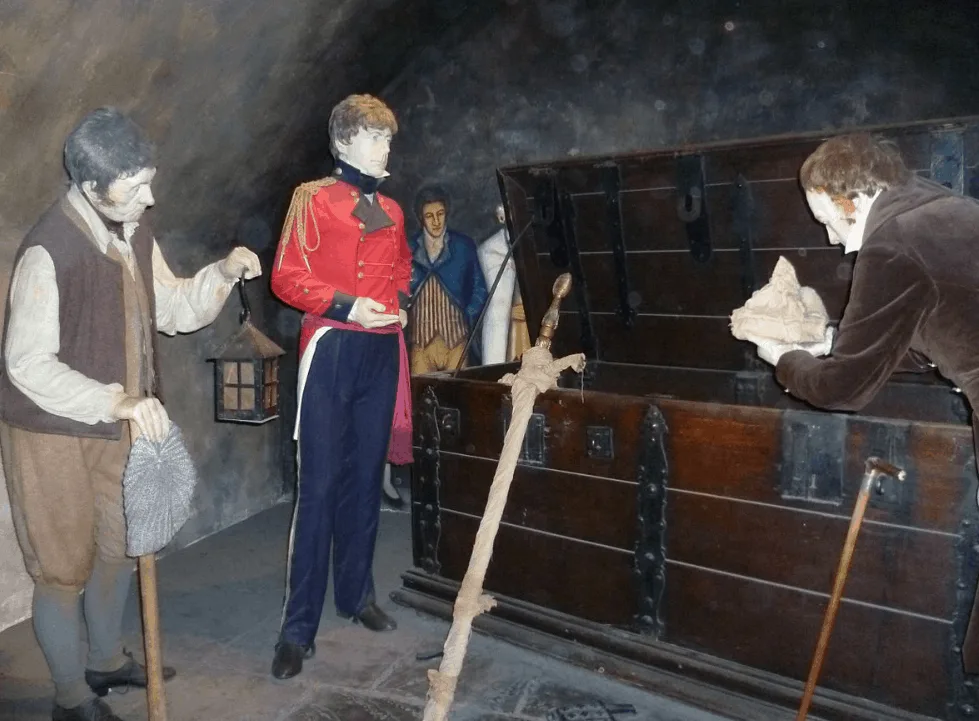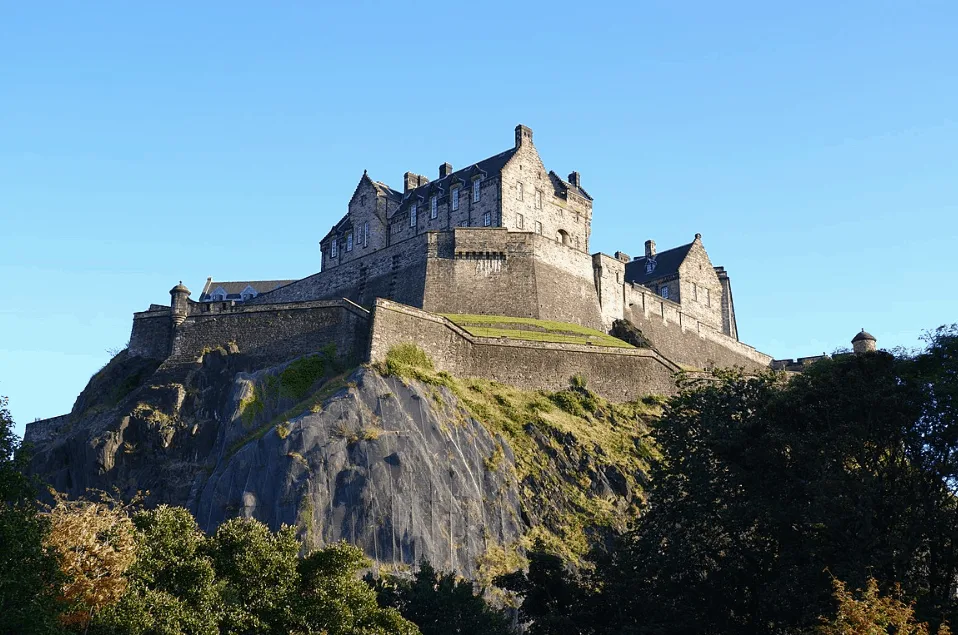This historic and famous castle dominates the skyline of the city of Edinburgh and has done so for hundreds of years.
In this post, you’ll discover our list of the top 15 facts about Edinburgh Castle.
1. It’s located on an extinct volcano named “Castle Rock”
If you have ever walked around Edinburgh, the capital of Scotland, then you surely have seen the towering castle overlooking the city.
That’s because the castle was built in a very strategic location on top of the plug of an extinct volcano that formed over 350 million years ago and is now referred to as “Castle Rock.”
The summit of this rock is located about 130 meters (430 feet) above sea level and the rocky cliffs stand about 80 meters (260 feet) above the city’s landscape.
You can’t find a better place to build a fortress, right?!

2. There might have been a settlement as early as the 2nd Century
The strategic position of this rock and the possibility to build a stronghold on top of it most probably goes back to Roman times, even though there wasn’t any sign of a Roman structure on its location.
There is, however, a mention of a settlement of the Votadini, a Celtic people of the Iron Age in Great Britain, named “Alauna,” which translates to “Rock Place,” on a map drawn by Ptolemy in the 2nd Century A.D.
Just like other castles in the area near the English border such as Warkworth Castle, Alnwick Castle, and Bamburgh Castle, Edinburgh Castle has an important history due to its strategic location.
3. The Castle was mentioned in more detail in the 7th century

While the original mention of a settlement on Castle Rock doesn’t go into much detail about what sort of structure was located there, there wasn’t another mention until the 7th century.
Around this time, the castle was mentioned in a Welsh Poem called “Y Gododdin” and referred to as “The stronghold of Eidyn.”
Apparently, the stronghold wasn’t strong enough because it was besieged in the year 638 by the Angles under Oswald of Northumbria, and the Gododdin were defeated.
The castle became part of the Kingdom of Northumbria which would become part of England in the 10th century.

4. The first reference called it the “Castle of Maidens”
So there was a stronghold in the early Middle Ages, that’s pretty sure. This doesn’t mean it resembled the castle we can see today.
The first mention of a real castle was in the 11th century when the widow of King Malcolm III was told that her husband had died in the year 1093.
The future Saint Margaret apparently resided at the “Castle of Maidens,” and in struck by grief, died just a few days after hearing the news.
5. King David I built the first version of Edinburgh Castle
In the period that followed, the castle became the most prominent Royal Residence in Scotland. Under the reign of King David I, the youngest son of Malcolm III and Saint Margaret, the castle was turned into the seat of royal power.
Between 1139 and 1150, King David I held various assemblies with nobles and churchmen which is basically considered to be the persecutor of the Parliament of Scotland.
Yes, this happened right at Edinburgh Castle!
6. It’s home to the oldest building in Scotland
So how should you picture the castle during this period? Did it look kind of the same as it does today?
Well, not exactly. Most of the structures located on Castle Rock were likely made of wood. Only 2 stone buildings can be verified and of those 2, only 1 still stands today.
at the same time, this building is known as St. Margaret’s Chapel, is the oldest building in the city of Edinburgh. It was built by King David I in honor of his mother in the early 12th century.

7. It’s described as the most attacked place in the world
One of the most interesting facts about Edinburgh Castle is that it has seen a lot of action. So much that it has acquired the reputation of being the “most besieged place in Great Britain and one of the most attacked in the world.”
Whether or not that’s an honor, we’re not sure. It does mean, however, that not much is left from the medieval structures except for the chapel, which was spared several times.
It’s not like it was an easy place to take too, right? Nevertheless, in its 1100-year history, the castle has been besieged 26 times!
8. Not much survived a bombardment of 3,000 shots in 1573
One of the most notable sieges happened between 1571 and 1573 in an event referred to as the “Lang Siege.” This basically means the “Long Siege” and it indeed took a while before the issue was resolved.
The siege ended when an English Garrison of 1,000 men and 27 cannons arrived at Edinburgh and started aiming for the castle.
An estimated 3,000 shots were fired, basically destroying the castle completely in less than 2 months. The siege ended when the towers fell and the men holding the castle had to surrender.
Parts of the caste were instantly rebuilt, including the famous Half Moon Battery and Palace Block which were constructed between 1573 and 1588.

9. It was a Royal Residence until the 17th century
Ever since King David I established the castle as a royal seat, it was used as a royal residence of the Kings and Queens of Scotland.
This role gradually declined, and the final time it was used for a royal event was when King Charles I held a feast in the Great Hall and stayed the night before his Scottish coronation in 1633.
No monarch has resided in the castle since this event.
10. The castle saw its final military action in 1745
The final time the castle saw action in its extended history of conflicts was in the year 1745 during an event referred to as the “Second Jacobite Rising,” also known as the Forty-five Rebellion or simply the ’45.
This was an attempt by Charles Edward Stuart to regain the British throne for his father. Edinburgh was taken by the Jacobins but General George Preston who held the castle refused to surrender and started bombarding Jacobite positions in the city.
This worked out just fine and after the heavy cannon fire killed 4 people, the Jacobites ended the blockade and retreated.
Never again would the castle see military action again!

11. Edinburgh Castle became a monument because of a prison break
Just as many other castles in England and Europe, Edinburgh Castle has been used as a prison. These prisoners were held in the vaults of the castle and literally came from all around the world.
Prisoners of War from various conflicts were held here, including the Seven Years’ War (1756–1763), the American War of Independence (1775–1783), and the Napoleonic Wars (1803–1815).
This was the case until a large number of prisoners managed to escape from the vaults in the year 1811 when 49 prisoners managed to get out through a hole in the south wall.
Since then, its permanent use as a prison declined and the Castle’s role as a National Monument started to be established.
13. The Scottish Crown Jewels were lost at the castle for more than a century
The Scottish Crown Jewels, officially known as “The Honours of Scotland,” were deemed lost after the Union of England and Scotland in 1707. It wasn’t until over a century later that they were rediscovered by Sir Walter Scott in 1818.
The Honours of Scotland, which date back to the 15th and 16th centuries, are now still on display at the castle.

14. It houses a defunct siege gun and also one that shoots every day
If you ever wonder how it would have felt to be bombarded by a siege gun, then you have two options to relive the experience in Edinburgh!
First of all, you can check out the 15th-century siege gun referred to as “Mons Meg,” which is located inside the castle. It weighs 13,000 pounds (5.9 tonnes) but doesn’t actually work anymore.
Secondly, if you enjoy a nice stroll through the city, you might be shocked to hear the sound of a canon at exactly One O’Clock. The One O’Clock Gun fires a shot at exactly this time and has been doing so ever since 1861!

15. The Castle is one of the most popular tourist attractions in the UK
The castle houses a Scottish War Memorial and War Museum and holds an annual event referred to as the “Military Tattoo” every year. This event is visited by over 200,000 people.
The Castle is in the care of “Historic Environment Scotland” and is Scotland’s most-visited paid tourist attraction, and Great Britain’s second with well over 2 million yearly visitors.
Edinburgh Castle is much more than an iconic tourist attraction, as it has become the symbol of the city and the entire country as well!

